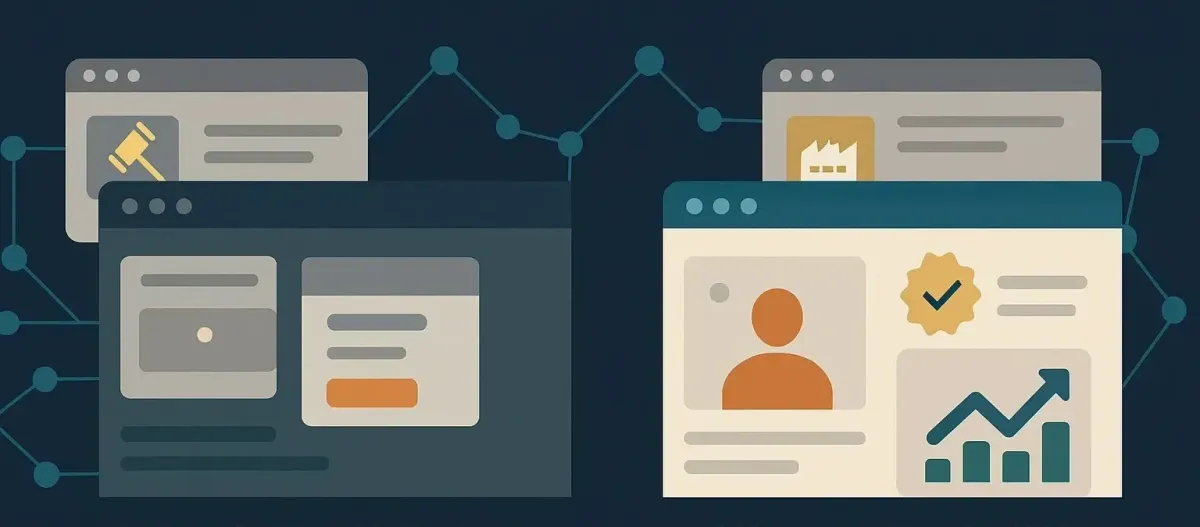Your B2B Business Isn't Too Niche for Personalisation: Your Customers are Human Too
Think personalisation won't work for your B2B business? From auction houses to wholesale giftware, we've proven every industry can deliver personalised experiences. The secret isn't complex algorithms - it's treating customers as humans, not data points.

Following our introduction to simple personalisation wins, you've no doubt asked yourself: "This sounds great, but will it work for my business?" The answer is unequivocally yes. Personalisation delivers results across every industry we've worked with, often in ways that might surprise you.
Previously, we established that personalisation isn't about complex algorithms or massive budgets. It's about starting simple and building smart. But here's what became clear during our conversations at Codegarden 2025: whilst the fundamentals remain consistent, each industry presents unique opportunities that many businesses are missing entirely. The challenge isn't technical capability; it's recognising that your customers (whether they're bidding at auctions or sourcing wholesale giftware) are humans who appreciate relevant, targeted experiences. Yet too many B2B sites treat their users like data points rather than people, creating a massive opportunity for businesses willing to think differently.
After 20+ years implementing e-commerce solutions and over a decade specifically focused on personalisation, we've seen the same truth repeatedly: every business is unique, but the underlying personalisation challenges fall into predictable patterns. Whether you're selling auction services, widgets, or legal training, your customers are humans making decisions based on preferences, needs, and context.
Let me share some real examples from our client work and recent prospect conversations to show you what personalisation looks like across different industries.
Complex Product Lines: When Choice Becomes Overwhelming
Some businesses offer products with multiple variables that can paralyse customers with choice.
Good Information Architecture IS Personalisation
Sometimes the most effective personalisation doesn't require complex technology at all. Working with Brightwells auction house showed us how smart content organisation can deliver personalised experiences.
Their business has clear natural segments: buyers versus sellers, and different auction departments (Plant & Machinery versus Classic Cars). There's rarely crossover between these groups - people buying construction equipment aren't usually bidding on vintage Aston Martins.
More importantly, buyers and sellers have completely different needs. Buyers need education about the bidding process, payment terms, and inspection opportunities. Sellers want to understand commission structures, marketing reach, and timing considerations.
The solution wasn't algorithmic. It was architectural. By organising content and navigation around these natural user journeys, we created a personalised experience that feels intuitive rather than technical. Buyers find the information they need without wading through seller-focused content, and vice versa.
This is personalisation at its most fundamental: recognising that different people need different things, and organising your site accordingly.
Spices: From Heat to Harmony
A Wisconsin spice company presented a similar challenge; customers struggling to navigate their extensive range. Based on some work we did for a UK Spice company a few years ago, we identified that spice preferences generally fall into three categories: flavour enhancers, tangy profiles, or heat seekers.
Our personalisation strategy goes beyond product recommendations. For customers who show spicy preferences, we subtly adjust the site's visual elements towards warmer reds. Tangy preference customers see more green accents. It's personalisation that works on both conscious and subconscious levels.
The beauty? BBQ enthusiasts and curry fans get completely different experiences, even when browsing the same product categories.
Professional vs Consumer Audiences: The B2B Personalisation Opportunity
B2B sites often treat all visitors the same, despite dramatically different needs and contexts.
Joe Davies: Where Garden Centres Meet Gift Shops
Long-term client Joe Davies supplies giftware to wholesale customers across two distinct markets: garden centres and gift shops. Same products, completely different customer needs.
Garden centre buyers focus on seasonal trends and outdoor themes. Gift shop owners prioritise year-round appeal and display considerations. By storing account types from their Microsoft Nav system, we've personalised their entire experience (from popular searches to product reports).
The results speak for themselves: a 3-5% increase in the number of lines purchased per order. More importantly, buyers report feeling more confident in their purchasing decisions because the recommendations feel relevant to their specific market.
Legal Training: Specialisation-Driven Success
A legal professional organisation we've been discussing opportunities with highlighted another B2B opportunity. Legal professionals attending training courses have clear specialisation areas (family law, corporate law, criminal defence) but their current site treats everyone identically.
Our proposed approach? Track which course categories generate interest, then tailor future communications and cross-selling opportunities. A corporate law specialist doesn't need family mediation training recommendations cluttering their experience.
This isn't just about a better user experience. It's about maximising revenue from your existing customer base through relevant upselling.
The "Hidden" Personalisation Already Working
Many successful personalisation techniques don't feel like personalisation at all.
B2B Pricing: Personalisation You've Been Doing for Years
Most B2B businesses already personalise without realising it. Personalised price lists? That's personalisation. Account-specific discounts? Personalisation. Different product catalogues for different customer types? You're already there.
The opportunity isn't starting from scratch. It's extending these existing practices to your digital experience.
Simple Wins That Feel Natural
Some of our most effective implementations are almost invisible:
- VAT toggles on B2B sites (7-9% of users actively choose their preferred view)
- Recently viewed products at the bottom of product pages (reduces frustrating back-button navigation)
- Search history storage that powers "searches like yours" recommendations
- Filter preferences that remember your size or category preferences
Customers don't think "wow, this is personalised." They think "this site just works well."
Intent-Driven Segmentation: Reading Between the Lines
Customer behaviour reveals intent more clearly than surveys ever could.
Understanding your existing customer segments is often the best starting point for personalisation. It's part of the reason we built our own customer segmentation platform, TrendSeam, to help businesses identify these patterns in their existing customer data before implementing any website personalisation. It's surprising how much insight you can gain from analysing purchase history, seasonal patterns, and product affinity data you already have.
This foundation of customer understanding then informs everything else (from website personalisation to email segmentation to product recommendations).
The B2B Personalisation Gap
Here's what strikes me most after years in this space: B2B sites consistently underperform because they don't treat users like humans.
Every visitor to your site is a person making decisions based on preferences, context, and needs. Yet most B2B sites serve up the same dry information overload to everyone. When your competitors are treating customers like order processing units, personalisation becomes your competitive advantage.
The data supports this too. B2B personalisation often delivers better results than D2C because:
- Customer data is more consistent and reliable
- Purchase intent patterns are clearer
- Relationship cycles are longer, allowing better data collection
- Transaction values justify the personalisation investment
What This Means for Your Business
The examples above span auction houses, spice retailers, wholesale giftware, and legal training. Different industries, different products, different customers, but the same underlying truth: personalisation works because people appreciate relevant experiences.
Your business isn't too niche, too complex, or too specialised for personalisation. You just need to start with the right foundation, which brings us back to our analytics-first methodology from the previous post.
Whether you're selling to garden centres or corporate lawyers, the approach remains consistent: track behaviour, identify patterns, start simple, build incrementally.
Where We're Heading
In our next post, we'll dive deeper into B2B personalisation with more examples and case studies from different sectors. Then we'll explore advanced personalisation techniques for businesses ready to move beyond the basics, covering sophisticated segmentation strategies, multi-channel personalisation, and the technical approaches that deliver measurable ROI improvements.
If you've been inspired by any of these examples and want to discuss personalisation opportunities for your specific industry, we'd love to hear from you. Similarly, if you're interested in exploring what TrendSeam could reveal about your existing customer segments, drop us a line. After all, the best personalisation strategies come from understanding your unique business challenges.
For more insights on e-commerce personalisation and digital strategy, visit www.tsd.digital or email us at clinic@tsd.digital.
